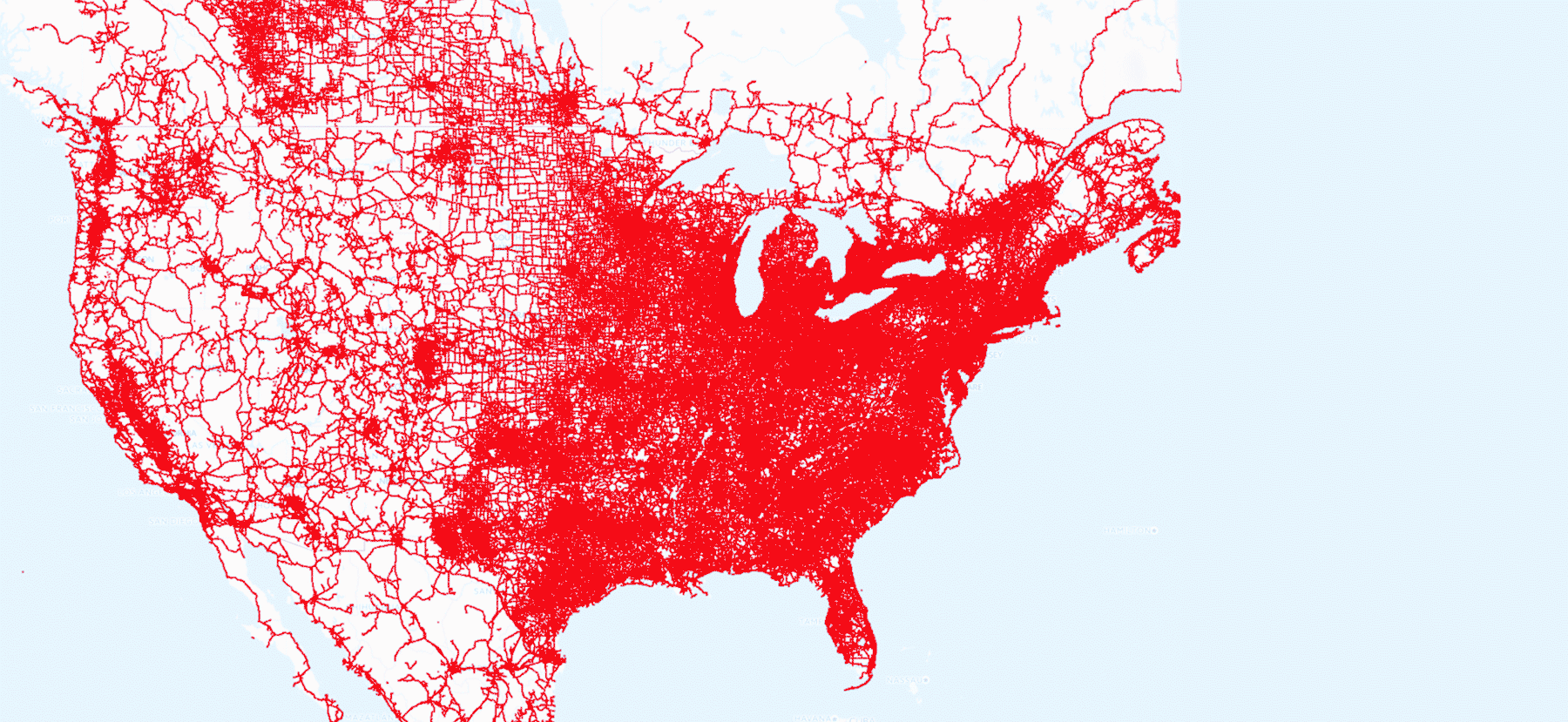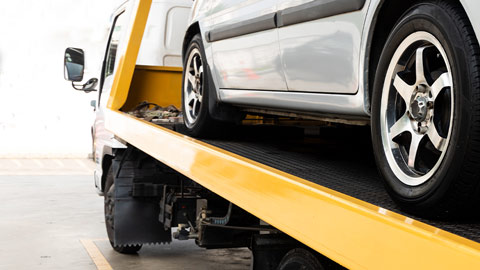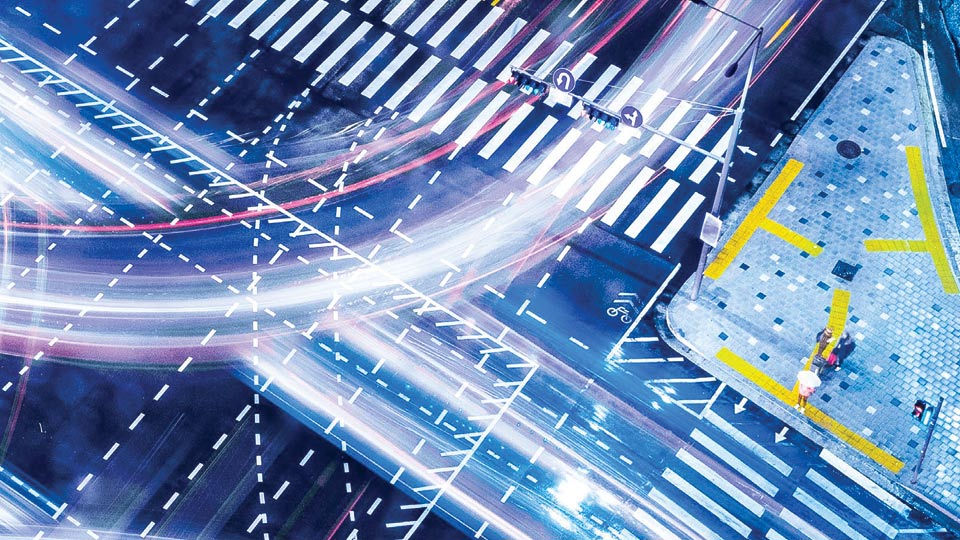
Data-driven smart city insights: intelligent datasets and urban analytics for digital cities

Table of contents
As urban population growth continues to outpace rural, cities across the globe continue to expand. In fact, the UN estimates that over 50% of the world’s population now lives in cities, and in the U.S. the number is closer to 80% [1,2]. This trend towards urbanization poses new municipal challenges centered around safety, mobility, efficiency, and citizen engagement.
To address these challenges, city leaders are turning to nascent Internet of Things (IoT) technologies and data analytics. Municipalities are undergoing a digital transformation that will revolutionize the way cities are managed. New and exciting mobile and static infrastructure technologies are enabling intelligent low-emissions transportation systems, safer communities, new low-cost utility services, more efficient city operations, and much more.
As a result, municipalities across North America and the rest of the world are investing heavily in the concept of a “Smart City.” In June of last year, Columbus, Ohio was awarded $50M from the U.S. Federal Government to develop this concept [3] and is in the process of deploying new infrastructure to accommodate their “Smart Columbus Vision.” This trend will only accelerate in 2018 and beyond as communities discover the benefits of this urban movement.

What is a Smart City?
In academia, a Smart City is defined as “an urban development vision to integrate information and communication technology (ICT) and Internet of things (IoT) technology in a secure fashion to manage a city’s assets [4].” In reality however, a Smart City can mean a lot of different things. For example, the Government of Dubai will measure the success of its 2021 Smart City plan in terms of reductions of CO2 emissions, average emergency response times, and the number of road fatalities [5]. Austin on the other hand is more focused on creating ladders of opportunity by connecting under-served communities to economic opportunities via smart transportation corridors to reduce the spread of poverty [6]. Cities like Orlando and Denver are focused on improving efficiencies in city operations and transportation systems [7,8].
Regardless of these differences, almost every Smart City program has one of (or a combination of) the following objectives:
1. Safety: Reducing accidents, injuries, fatalities, and EMS response times
2. Sustainability: Reducing CO2 emissions and other pollutants/contaminants
3. Efficiency: Improving city operations and logistics to offset costs
4. Equality: Creating ladders of opportunities for under-served or underprivileged areas
5. Engagement: Improving citizen engagement and social interactions
Further to the functional objectives above, Smart City initiatives can involve a varying degree of technology implementation. Everything from a simple public-facing downtown development map to a complicated deployment of Bluetooth sensors to track traffic patterns [9,10]. In almost every case however, sensor data is critical to an effective Smart City strategy.
Sensors everywhere!
Many of today’s Smart City programs involve some form of mass scale sensor deployment to gather the necessary data to justify and manage change. This is essential to any IoT program; you can’t manage what you don’t measure. The deployment of these sensors, however, can often be very expensive, especially when new city-wide infrastructure is required. Some municipalities chose to deploy smart sensors in their roadways to measure roadside temperature, while others deploy connected street lamps to collect real-time sensor data across the city [11,12]. In either case, cities could save a lot of money if they were able to leverage existing sensor networks and avoid expensive infrastructure investments.
Enter Geotab. Leveraging one of the world’s largest organically grown vehicle datasets, Geotab has access to aggregated data blanketing every major urban roadway throughout North America.

Heatmap depicting sensor network coverage over the course of one day.
This data is derived from over 1.1 billion miles of driving every month (the equivalent of 12 trips to the sun), and when combined with third-party peripherals and sensor-data, makes up one of the industry’s largest IoT mobile sensor networks. Using advanced analytics and data science capabilities, Geotab applies artificial intelligence and machine learning techniques to enrich this aggregated data and deliver actionable insights. These insights can be used to infer road conditions, identify dangerous roadways and intersections, predict traffic patterns, and so much more [13].
Introducing Geotab’s smart city insights
Geotab processes over 2 billion data points per day. These data points contain rich information that can be analyzed to generate Smart City insights. Geotab’s data scientists extract these insights for consumption by municipalities, and for city leaders, this means real-time visibility to their city operations:
Road conditions
Automatically identify potholes and other poor road conditions using Geotab’s road conditions dataset. Aggregated vertical axis accelerometer data is analyzed in near real-time to indicate areas in need of road maintenance/repair. This data can be integrated directly into a city’s public works and/or road maintenance departments for automated dispatching and work orders.
Traffic flow
Determine the average speed on all your city roads throughout the day. Identify traffic bottlenecks and/ or road segments where excessive speeding may be an issue. Monitor the effects of new signage and/or traffic-light scheduling in near real-time. Optimize traffic flow during the construction seasons and other traffic disturbances.
Dangerous roadways/intersections:
Take action on road safety. Identify the most dangerous roadways in your city. Discover hazardous intersections and/or road conditions that result in accidents or near-misses. Engage with your citizens to reduce dangerous driving behaviours and reroute pedestrian pathways to avoid dangerous areas.
Roadside weather:
Gain insight into hyper local roadside weather conditions on all your major roadways. Identify potential black ice conditions or high temperature areas that could lead to concrete buckling or cracking [14]. Proactively notify your citizens of dangerous road conditions in near real-time.
Electric vehicle (EV) infrastructure planning:
Locate optimal charging station locations based on real EV traffic. Capitalize on revenue-generation opportunities and extend the range of your municipal EV fleet.
Other smart city datasets:
Traffic Arteries: Identify major commuting and commercial traffic arteries in your city. Simulate the effects of road closures and traffic disturbances, and run day-to-day scenario analyses to validate your predictions.
Parking: Is parking availability a challenge during certain times of day? Are vehicles circling unnecessarily to find a parking spot and causing unneeded congestion? Identify those trouble locations and adjust signage accordingly
Emissions: Support your sustainability goals and lower your CO2 emissions by pinpointing areas in your city that are experiencing high engine idling.
Connected Car and Urban Analytics
The Future of Urban Planning
There is little doubt that the Smart City revolution has begun. Many of the world’s best cities are already adopting new policies that will position them for efficient and sustainable growth. Telematics and related connected car technologies will be key enablers to this revolution, used to collect the necessary data to enable and manage change.
The average vehicle on U.S. roads is 12 years old (13 years in Europe). Therefore, assuming that all new vehicles are sold with some form of connected car solution, only 50% of vehicles will be OEM-connected by the year 2029. This presents a major problem, since most Smart City initiatives depend on statistically-significant data-driven insights, which in turn depend on ubiquitous data coverage and density. This is where Geotab can help. With one of the industry’s only aftermarket cross-platform plug-and-play telematics device, Geotab enables the rapid deployment and scaling of mobile sensor networks that are necessary to capture city-wide data.
However, as mentioned above, municipal data on its own is not necessarily actionable. Urban Analytics attempts to filter, shape, and visualize this data in a manner that uncovers unique and actionable insights. These insights can be used to identify focus areas for improvement, justify strategic proposals, and manage their execution. With near real-time visibility to your entire municipality’s operations, cities can optimize urban planning and fast-track their progress towards becoming a Smart City.
For further details, please contact smartcity@geotab.com
References
- United Nations. (2016). The World’s Cities in 2016. [Online]. Available: http://www.un.org/en/development/desa/population/publications/pdf/urbanization/the_worlds_cities_in_2016_data_booklet.pdf
- United States Census Bureau. (2012, Mar. 26). Growth in Urban Population Outpaces Rest of Nation, Census Bureau Reports. [Online]. Available: https://www.census.gov/newsroom/releases/archives/2010_census/cb12-50.html
- H. Kelly and M. McFarland. (2016, Jun. 23). Columbus wins $50 million DoT Smart Cities Challenge. CNN. [Online]. Available: http://money.cnn.com/2016/06/23/technology/columbus-smart-cities/index.html
- Dr. S. Musa. (2016, Jan.) Smart City Roadmap. [Online]. Available: http://www.academia.edu/21181336/Smart_City_Roadmap
- S. Kinney. (2017, Jan. 23). Driving digital transformation in smart cities. RCR Wireless News. [Online]. Available: https://www.rcrwireless.com/20170123/fundamentals/digital-transformation-smart-cities-tag17-tag99
- G. Goodin. (2016, Apr. 5). Austin, TX and the Smart Cities Challenge: Improving transportation, creating ladders of opportunity. [Online]. Available: https://austintexas.gov/blog/austin-tx-and-smart-cities-challenge-improving-transportation-creating-ladders-opportunity
- B. Dyer. (2017, May 16). Using Digital Technologies to Improve City Operations. [Online]. Available: http://www.cityoforlando.net/mayor/2017/05/using-digital-technologies-to-improve-city-operations/
- City and County of Denver. (2017). Denver Secures $6 Million Grant to Advance Smart Transportation Initiatives. [Online]. Available: http://www.denvergov.org/content/denvergov/en/transportation-mobility/smart-city.html
- San Diego UbdDeZine. (2017). San Diego Downtown Development Map. [Online]. Available: https://sandiego.urbdezine.com/development-map/
- J. M. Gitlin. (2017, Jul. 24). Concerned about connected car privacy? Bluetooth sensors used to track traffic. Ars Technica. [Online]. Available: https://arstechnica.com/cars/2017/07/a-danish-town-has-been-using-bluetoothsensors-to-track-traffic-patterns/
- High Sierra Electronics, Inc. (n.d.). Urban NTCIP Road Sensor Station Applications City and County of Denver, CO. [Online]. Available: https://www.highsierraelectronics.com/products/431
- Current, powered by GE. (2017, Feb. 22). San Diego to Deploy World’s Largest Smart City IoT Platform with Current, powered by GE. [Online]. Available: http://www.marketwired.com/press-release/san-diego-depaoyworlds-largest-smart-city-iot-platform-with-current-powered-ge-2197840.html
- Geotab. (n.d.). The Most Dangerous Highways in America. [Online]. Available: https://www.geotab.com/the-most-dangerous-highways-in-america/
- Better Institutions. (2013, Jul. 18). Extreme temperatures are affecting every mode of transportation. [Online]. Available: http://www.betterinstitutions.com/blog/2013/07/extreme-temperatures-are-affecting
Post Tags
About Geotab
Geotab, the global leader in connected vehicle and asset solutions, leverages advanced data analytics and AI to enhance fleet performance, safety, and sustainability while optimizing costs. Backed by a team of industry leading data scientists, engineers and AI experts, we serve over 50,000 customers across 160 countries, processing billions of data points hourly from more than 4 million vehicles. Data security and privacy are at the forefront of all we do—trusted by Fortune 500 organizations and some of the largest public sector fleets in the world, we meet top cybersecurity standards. Geotab’s open platform and diverse Geotab Marketplace offers hundreds of fleet-ready third-party solutions. Learn more at www.geotab.com and follow us on LinkedIn or visit Geotab News and Views.
© 2024 Geotab Inc.All Rights Reserved.
This white paper is intended to provide information and encourage discussion on topics of interest to the telematics community. Geotab is not providing technical, professional or legal advice through this white paper. While every effort has been made to ensure that the information in this white paper is timely and accurate, errors and omissions may occur, and the information presented here may become out-of-date with the passage of time.
Recent News
-Thumbnail@2x.jpg)
Mining value from connected vehicle data: How OEMs can lead the next-gen of data-enabled services
November 11, 2021

Telematics for winter operations: How Massachusetts DOT balances safety, efficiency & sustainability
September 21, 2021

Collision reconstruction with telematics
June 5, 2020

Geotab smart intersection insights: Data-driven traffic signals in Las Vegas
March 16, 2020





